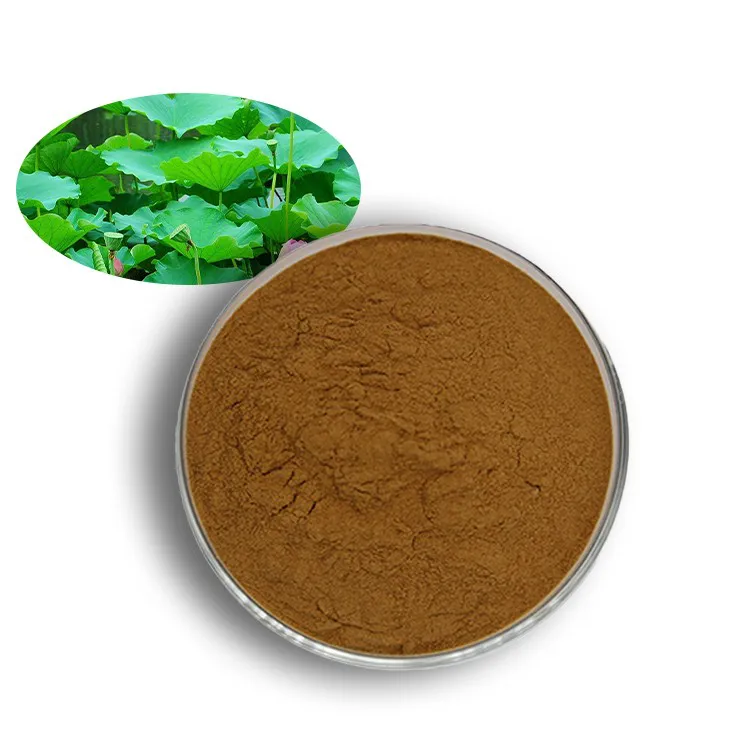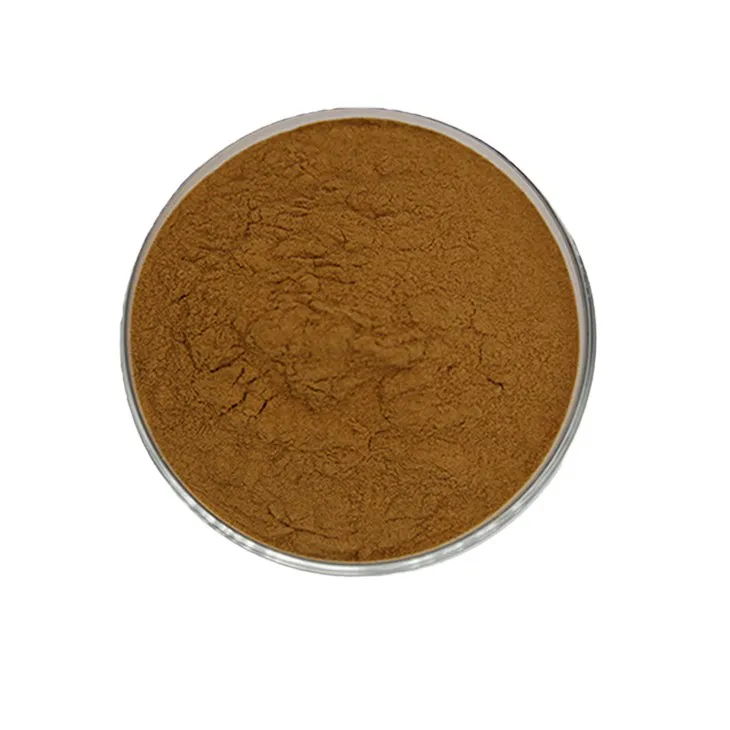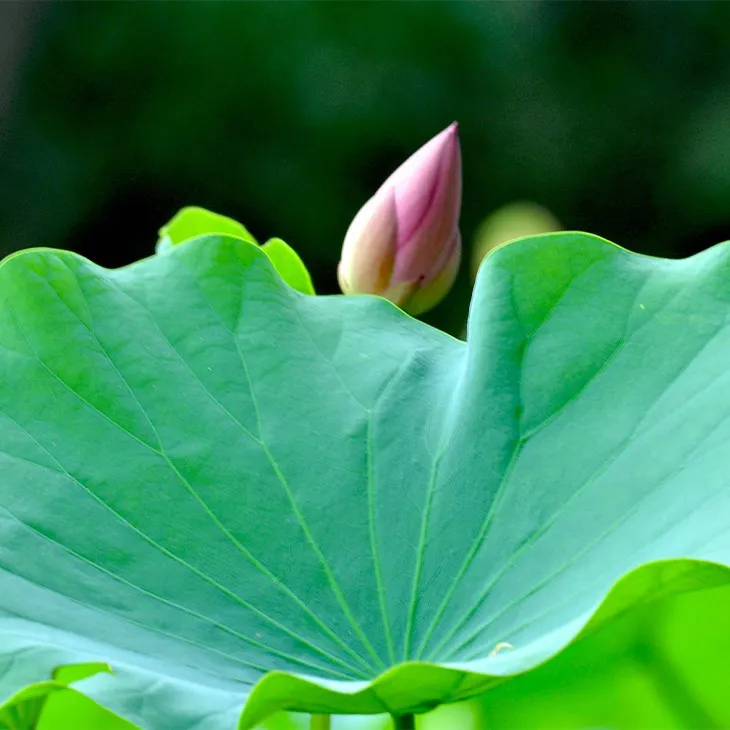- 0086-571-85302990
- sales@greenskybio.com
Extraction Technology and Production Process of Lotus Leaf Extract.
2024-11-28

1. Introduction
Lotus leaves have been widely used in traditional medicine for centuries. The Lotus leaf extract contains various active components, which have potential antioxidant, anti - inflammatory, and slimming effects. Therefore, the extraction technology and production process of Lotus leaf extract are crucial for obtaining high - quality products with desirable pharmacological properties.

2. Maceration Extraction
2.1 Principle
Maceration extraction is a traditional and basic method for extracting Lotus leaf extract. It is based on the principle of mass transfer. When the lotus leaves are soaked in a solvent, the active components in the lotus leaves, such as alkaloids, flavonoids, and phenolic acids, will gradually dissolve in the solvent due to the concentration difference between the inside and outside of the lotus leaves.
2.2 Process
- First, select high - quality lotus leaves. The quality of raw materials directly affects the quality of the extract.
- Then, cut or crush the lotus leaves into an appropriate size. This can increase the contact area between the lotus leaves and the solvent, which is beneficial to the extraction of active components.
- Next, choose a suitable solvent. Commonly used solvents include ethanol, water, and a mixture of ethanol and water. The choice of solvent depends on the solubility of the target active components.
- After that, soak the processed lotus leaves in the solvent at a certain temperature for a certain period. For example, it may be soaked at room temperature for 24 - 72 hours. During this process, it is necessary to stir occasionally to ensure uniform extraction.
- Finally, filter the mixture to obtain the extract solution, and the residue can be discarded.
2.3 Factors Affecting Maceration Extraction
- Ratio of raw materials to solvents: If the amount of solvent is too small relative to the lotus leaves, the extraction may be incomplete. On the contrary, if the amount of solvent is too large, it will increase the cost and subsequent processing difficulty.
- Temperature: Although maceration extraction can be carried out at room temperature, a slightly higher temperature can accelerate the extraction rate. However, too high a temperature may cause the degradation of some active components.
- Time: Sufficient soaking time is required for complete extraction. But if the time is too long, it may also lead to the extraction of some impurities.

3. Microwave - Assisted Extraction
3.1 Principle
Microwave - assisted extraction utilizes microwave energy to heat the extraction system. Microwaves can penetrate the lotus leaves and solvent, causing the polar molecules in them to rotate rapidly. This rapid rotation generates heat, which in turn accelerates the dissolution of active components in the lotus leaves into the solvent. Compared with traditional maceration extraction, microwave - assisted extraction can significantly shorten the extraction time and improve the extraction efficiency.
3.2 Process
- Prepare the lotus leaves as in the maceration extraction method, including cleaning, cutting or crushing.
- Put the lotus leaves and solvent into a microwave - compatible extraction container.
- Set the appropriate microwave power and extraction time. For example, the microwave power can be set to 300 - 800 W, and the extraction time can be 5 - 30 minutes, depending on the amount of raw materials and the type of solvent.
- After the extraction is completed, cool the extraction system to room temperature and then filter to obtain the extract solution.
3.3 Advantages and Disadvantages
- Advantages:
- High extraction efficiency, which can save time and energy.
- Can better preserve the activity of some heat - sensitive active components due to the relatively short extraction time.
- Disadvantages:
- The equipment cost is relatively high.
- Requires strict control of microwave power and extraction time to avoid over - extraction or degradation of active components.

4. Separation and Concentration
4.1 Separation
After obtaining the extract solution by either maceration extraction or microwave - assisted extraction, the next step is separation. Filtration is the most commonly used separation method. There are various types of filters, such as filter paper, filter membranes, and filter cartridges. The choice of filter depends on the particle size of the impurities in the extract solution and the required filtration precision.
4.2 Concentration
- Evaporation is a common method for concentration. By heating the extract solution under reduced pressure or normal pressure, the solvent is evaporated, and the concentration of the active components in the solution is increased.
- Another method is membrane concentration. Ultrafiltration or reverse osmosis membranes can be used to separate the solvent from the active components, achieving the purpose of concentration. This method has the advantage of being able to operate at a lower temperature, which is beneficial to protecting the activity of heat - sensitive components.

5. Quality Control
5.1 Component Analysis
Quality control of lotus leaf extract is essential to ensure its safety and effectiveness. Component analysis is the first step. High - performance liquid chromatography (HPLC), gas chromatography - mass spectrometry (GC - MS), and other analytical techniques can be used to identify and quantify the active components in the extract, such as flavonoids, alkaloids, and phenolic acids.
5.2 Purity and Impurity Detection
- Detecting the purity of the extract is necessary. Impurities may come from raw materials, solvents, or the extraction and processing steps. Methods such as ultraviolet - visible spectroscopy (UV - Vis) and infrared spectroscopy (IR) can be used to detect impurities.
- Heavy metal detection is also an important part of quality control. Excessive heavy metals in the extract can pose a risk to human health. Atomic absorption spectrometry (AAS) or inductively coupled plasma - mass spectrometry (ICP - MS) can be used for heavy metal detection.
6. Applications
6.1 Antioxidant Products
The active components in lotus leaf extract, such as flavonoids, have strong antioxidant properties. They can scavenge free radicals in the body, reduce oxidative stress, and prevent cell damage. Therefore, lotus leaf extract can be added to antioxidant products such as skin care products and health foods.
6.2 Anti - inflammatory Products
Some components in the lotus leaf extract have anti - inflammatory effects. They can inhibit the production of inflammatory mediators and reduce inflammation in the body. This makes lotus leaf extract suitable for use in anti - inflammatory products, such as drugs for treating inflammatory diseases or anti - inflammatory cosmetics.
6.3 Slimming Products
- Lotus leaf extract is believed to have a slimming effect. It may act on the body's metabolism, promoting fat burning and reducing fat absorption. However, more scientific research is still needed to fully understand its slimming mechanism.
- Due to its potential slimming effect, lotus leaf extract is often added to slimming products such as slimming teas and slimming capsules.
7. Conclusion
The extraction technology and production process of lotus leaf extract are complex and multi - faceted. Different extraction methods, such as maceration extraction and microwave - assisted extraction, have their own characteristics. The subsequent separation and concentration steps also play important roles in obtaining high - quality lotus leaf extract. Quality control is necessary to ensure the safety and effectiveness of the extract. With its unique pharmacological properties, lotus leaf extract has broad application prospects in antioxidant, anti - inflammatory, and slimming products.
FAQ:
What are the main extraction methods for lotus leaf extract?
The main extraction methods for lotus leaf extract include maceration extraction and microwave - assisted extraction. Maceration extraction involves soaking lotus leaves in a solvent for a certain period to extract active components. Microwave - assisted extraction uses microwave energy to accelerate the extraction rate.
What factors need to be considered in the production process of lotus leaf extract?
In the production process of lotus leaf extract, factors such as the ratio of raw materials to solvents need to be considered. These factors can affect the extraction efficiency and quality of the final product.
Why is the separation and concentration step important in the production of lotus leaf extract?
The separation and concentration step is important in the production of lotus leaf extract because it helps to purify the extract and increase the concentration of active components. This makes the lotus leaf extract more suitable for use in various products.
What are the potential applications of lotus leaf extract?
Lotus leaf extract can be widely used in antioxidant, anti - inflammatory and slimming products due to its unique pharmacological properties.
How does microwave - assisted extraction work in the production of lotus leaf extract?
Microwave - assisted extraction in the production of lotus leaf extract works by using microwave energy. The microwave energy can penetrate the lotus leaf material and cause the active components to be released more quickly, thus accelerating the extraction rate.
Related literature
- Advances in the Extraction and Application of Lotus Leaf Extract"
- "Study on the Optimal Extraction Technology of Lotus Leaf Extract"
- "The Pharmacological Properties and Extraction Process of Lotus Leaf Extract"
- ▶ Hesperidin
- ▶ citrus bioflavonoids
- ▶ plant extract
- ▶ lycopene
- ▶ Diosmin
- ▶ Grape seed extract
- ▶ Sea buckthorn Juice Powder
- ▶ Beetroot powder
- ▶ Hops Extract
- ▶ Artichoke Extract
- ▶ Reishi mushroom extract
- ▶ Astaxanthin
- ▶ Green Tea Extract
- ▶ Curcumin Extract
- ▶ Horse Chestnut Extract
- ▶ Other Problems
- ▶ Boswellia Serrata Extract
- ▶ Resveratrol Extract
- ▶ Marigold Extract
- ▶ Grape Leaf Extract
- ▶ blog3
- ▶ Aminolevulinic acid
- ▶ Cranberry Extract
- ▶ Red Yeast Rice
- ▶ Red Wine Extract
-
Feverfew Extract
2024-11-28
-
Ginseng Root Extract
2024-11-28
-
Mulberry leaf Extract
2024-11-28
-
Resveratrol extract
2024-11-28
-
Nutmeg Extract
2024-11-28
-
Agaricus Blazei Extract
2024-11-28
-
Ginger Extract
2024-11-28
-
Red Wine Extract
2024-11-28
-
Marigold Extract
2024-11-28
-
Phellodendron Extract
2024-11-28





















